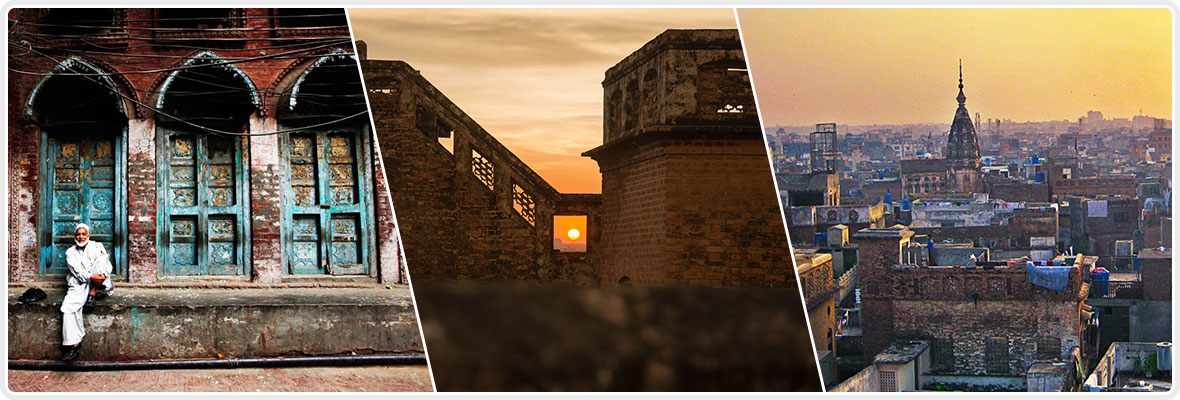Journey of Reviving the Glory of Rawalpindi By Tauseef and His Team
Table of Contents
The pre-zone building is located in the new store in Rawalpindi, Pakistan. The history of Rawalpindi is reflected in the unique and decadent beauty of its buildings and streets, and bears the mark of everyone who has experienced this city.
Rawalpindi: Twice a month, for a few hours each hour, young explorers and cultural enthusiasts follow Hasan Tauseef and lead them through the narrow alleys and the Rawalpindi. Forgotten streets to discover some of the most interesting and unknown places in Pakistan’s third largest city.
“I want to start showing people around because there are so many things hidden here,” Tauseef, a 20-year-old architecture student from the capital Islamabad. I want to start offering tours for people because there are too many things hidden here. The story was shared by Arab News.
Since January this year, he has been arranging Pindi Heritage itineraries with other young people to discover and record Rawalpindi.
Although its unique cultural and architectural heritage has been neglected for decades, Rawalpindi has regained attention as young people seek to learn more about this centuries-old city and will tell the history of the city. The story is retold as today’s story.
A Young Tour Guide Strives To Revive the Glory of the Ancient City of Pakistan
The history of Rawalpindi is known as the twin city of Islamabad. Although it spans a rich and diverse tradition, it has not been widely praised. It is located within the borders of the ancient Kingdom of Gandhara, which straddles parts of Afghanistan and Pakistan.
Its closest settlement dates back to the destruction of Rawalpindi by Mahmoud of Ghaznavi, the first independent ruler of the Turkish Ghaznavi dynasty, in early November.
During the Mughal era, Rawalpindi was ruled by the Ghakar family until it was taken over by Sikh rulers in the 1860s. Then, the British East India Company took over, transforming it into a trading centre and a garrison city.

Sunset in Rawalpindi
Pindi Heritage walks quickly became popular because people came to discover new treasures and also saw some famous religious sites in the city (mainly Hindus), such as Krishna Mandir, Kalyan · The ancient temple in front of Kalyan Das Temple and Narankari Bazaar was designed by Shirimati Devi in 1880 to commemorate her husband.
During a walk last Saturday morning, Tauseef said that he came across some cool new exhibits- a statue of a deity above a residence, a small Hindu and Sikh temple in an alley, and a centuries-old temple.
Tauseef said, “I hope that through this trip, we will be able to accept Rawalpindi more widely as a religious tourist attraction in Pakistan and eliminate its religious significance.”
His research on Rawalpindi architecture focused on the buildings left over from the religious communities that lived in the city before the Indian subcontinent division before the rise of Muslim Pakistan in 1947.
Prior to this, the city was dominated by Hindus, who mainly immigrated to India. Then, Hindus settled in the homes left by Muslims who left India to settle in Pakistan under similar circumstances.

An old man in the streets of Rawalpindi
He said that portraying human images is to find inspiration for societies that have lost their history for many years.
Maryam Salim Farooqi and Reza Arif wrote in a 2015 newspaper article, “The Lost Art of Rawalpindi,” that “the city of Rawalpindi has a unique and diverse history; unfortunately, most of its residents no longer know it.”
Even today, in the heart of Rawalpindi, the family still lives in the original buildings before the division, many of which still contain carvings and decorative relics of the indigenous people. These old buildings are now in poor condition and require proper maintenance. .
Farooqi and Arif wrote: “Break-in, demolition, destruction and extremism-there is no shortage of problems with heritage sites.”
But Tauseef said that interest in the preservation of Rawalpindi is growing: “People want to preserve what belongs to us.”
Shiraz Hassan, a journalist who frequently records Rawalpindi and its history, believes that appropriate investment can develop the city’s traditional tourism industry.
He further said: “The narrow streets, beautiful doors and balconies, and the architectural treasures of the city give us a glimpse of its rich history and culture.” “Even today, many people living in the Twin Cities still don’t know how to live in the old city. A historical landmark found in the city.”
Tauseef said that he is accessing documents, maps and detailed information on historical sites with a friend to build a database.
He said: “If we can access information with the support of the government, then we can build a database so that other people don’t have to follow what we do.” “We can save history here and have it in the country. The growth of religious tourism is based on development.” If you are looking for top places in Rawalpindi to visit, or want to try mouth-watering food in restaurants in Rawalpindi then read our blog and leave your thoughts below.







